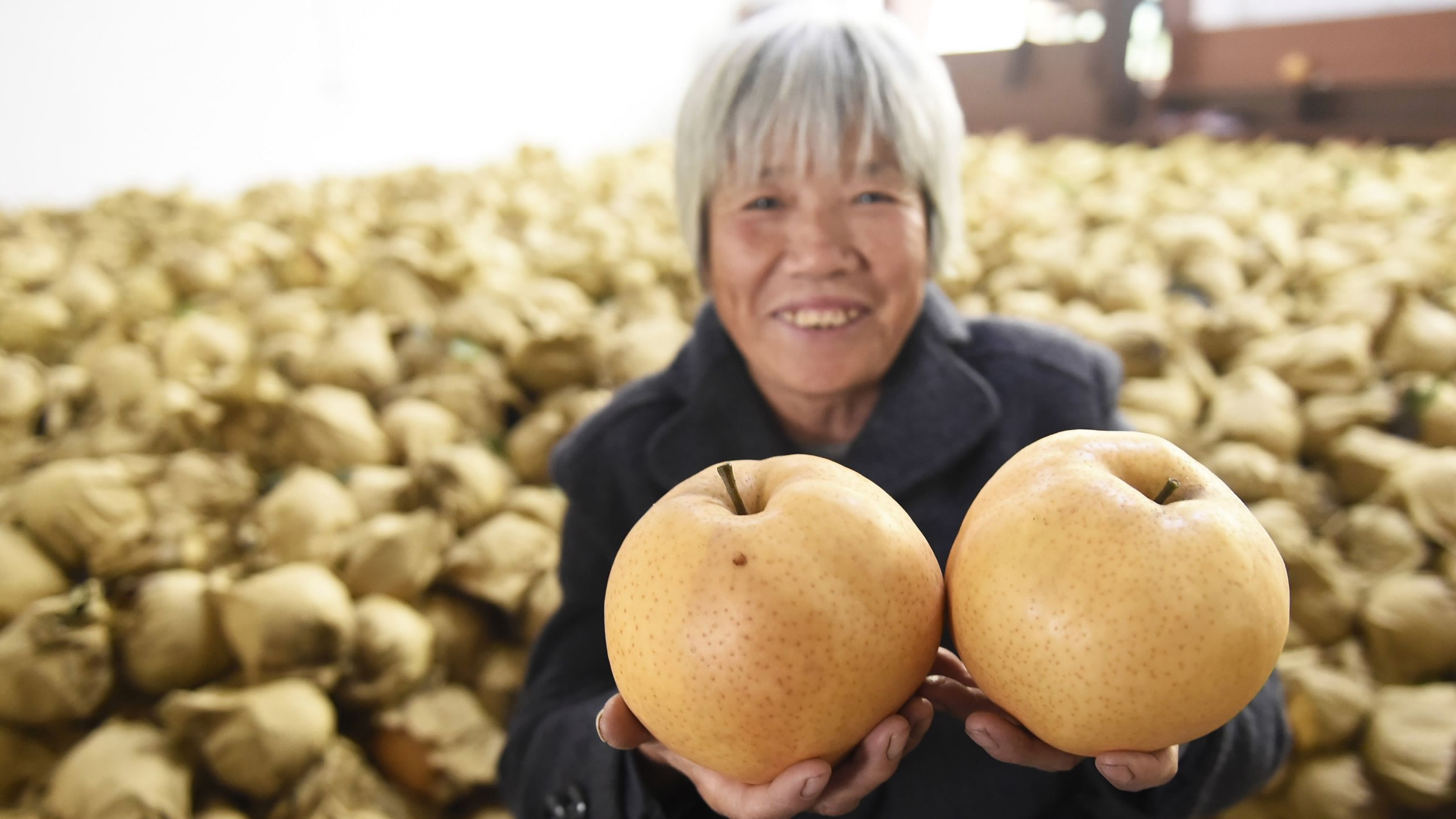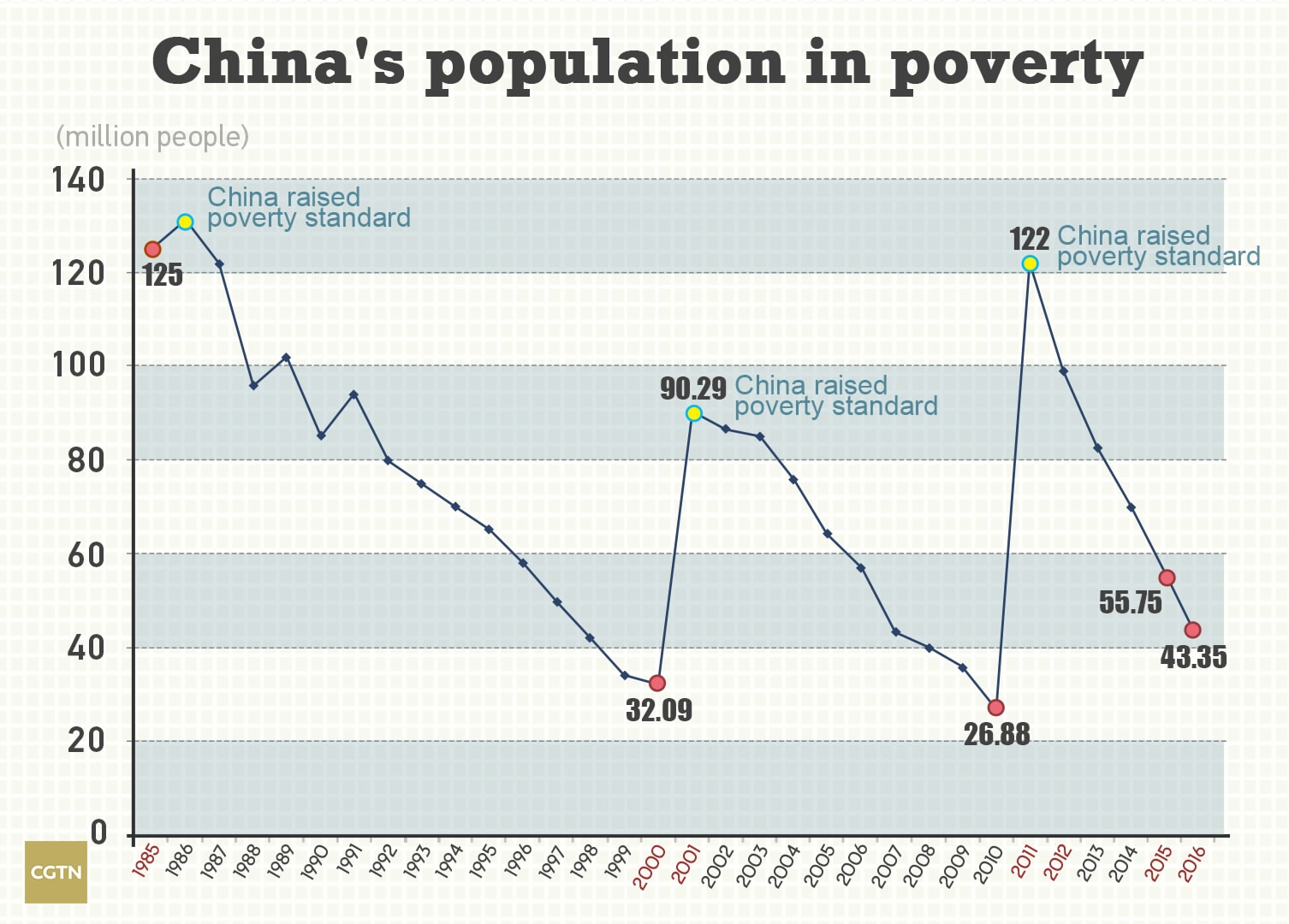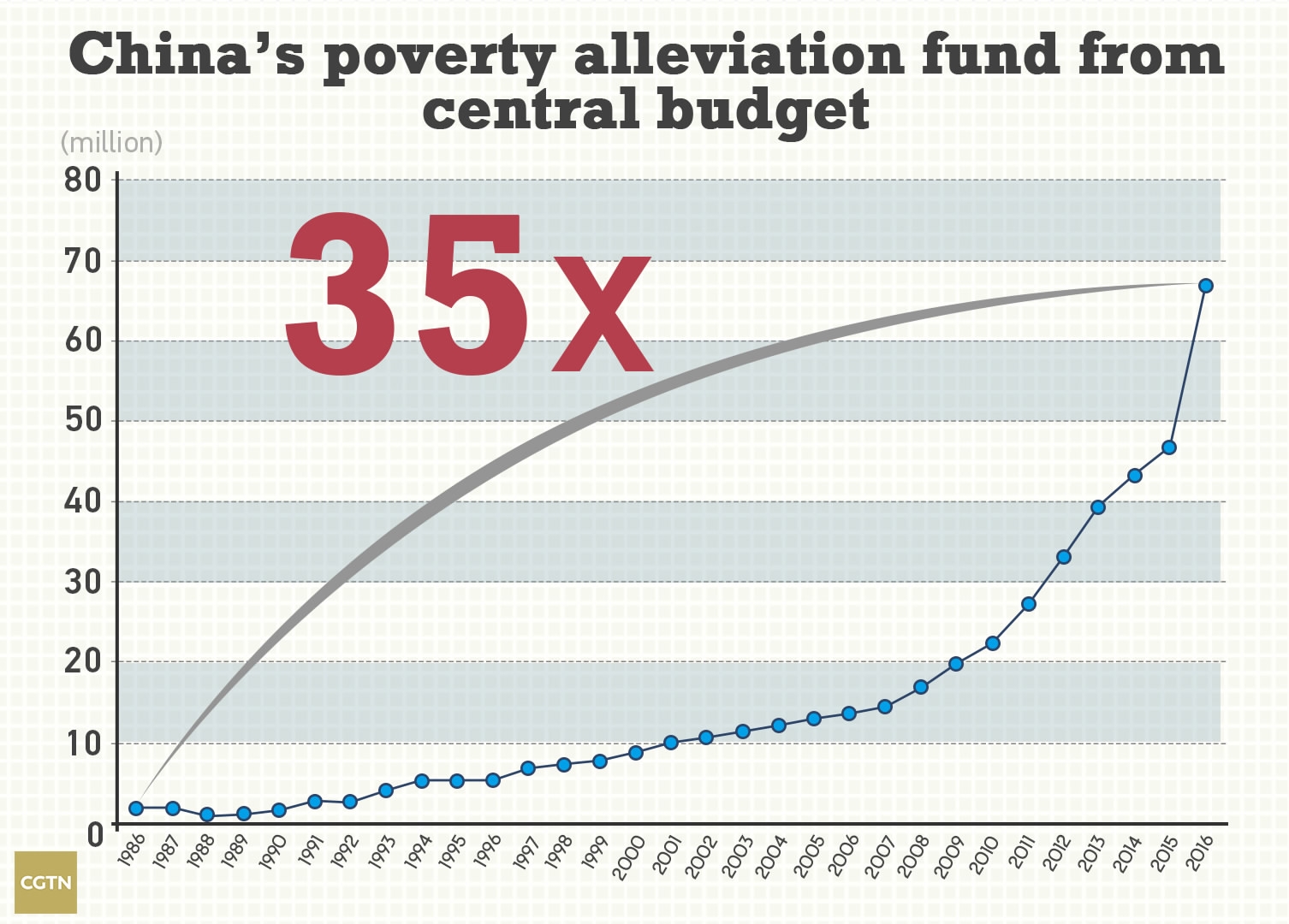
Business
13:40, 17-Oct-2017
China to eradicate poverty by 2020
CGTN's Yang Jing

With unprecedented achievements in poverty alleviation, China is a major contributor to global poverty reduction and has taken a step closer to making poverty history.
China’s achievements
After lifting more than 55.64 million people out of poverty between 2013 and 2016, China plans to help a further 10 million people this year, Liu Yongfu, director of the State Council Leading Group Office of Poverty Alleviation and Development, said at a press conference on October 10.
The country’s poverty incidence has been reduced from 10.2 percent in 2012 to 4.5 percent last year, according to official data.
China's achievement in poverty alleviation has been "one of the greatest stories in human history," Jim Yong Kim, President of the World Bank, told CGTN at the G20 Finance Ministers and Central Bank Governors meeting in Washington on October 13.
The world’s extreme poverty rate has been reduced from 40 percent in 1981 to 10.7 percent in 2013, and "most of the progress happened in China," he said.
According to the international standard set by the World Bank, anyone who lives on less than 1.90 US dollars per day is considered to be in extreme poverty.
In China, the living standards have been on a gradual rise as the economy develops.

China currently sets its poverty standard at around 2.2 US dollars per capita each day, slightly higher than the international poverty line.
According to a document released by the State Council in 2015, extreme poverty will be eradicated in China by 2020 with no one living below the official poverty line.

The document also stressed the strategy of tailor-made measures to target specific groups in poverty.
Specific measures include moving the poor households to more livable areas, developing local industries and businesses, offering job training and education support, Su Guoxia, spokesperson for the State Council Leading Group Office of Poverty Alleviation and Development, said in an interview in February.
Financial support and spending on poverty alleviation in China have jumped 35-fold in 30 years.

China's institutional design has allowed increasing flexibility for innovative bottom-up processes that are instrumental in providing tailor-made solutions, Nicholas Rosellini, the United Nations Resident Coordinator and UNDP Resident Representative in China, said in an article on the UNDP’s website.
For example, many poor Chinese villages have seen a great deal of progress encouraged by local entrepreneurship, which is maximized out of proper policies and guidance, he said.
Jim Yong Kim said that the World Bank is working with companies, such as Alibaba, to seek ways to finance small and medium enterprises in Africa, following a similar pattern to Alibaba's activities in China.
China’s young generation is also paving its own way to reduce poverty through innovation.
One of the most well-known efforts is the non-profit organization, "Serve for China", founded in 2015 by Qin Yuefei, who served as a village chief in central China’s Hunan Province after graduating from Yale University.

"Serve For China" members in a village. /"Serve For China" Photo
"Serve For China" members in a village. /"Serve For China" Photo
"Serve for China" aims to alleviate poverty by sending top Chinese graduates from around the world to Chinese villages where they can use their skills to promote rural development and social entrepreneurship.
Since September last year, the organization has started development and start-up projects in 15 villages and 12 co-ops have been established to promote local products, generating revenue for local people, media reports said.

SITEMAP
Copyright © 2018 CGTN. Beijing ICP prepared NO.16065310-3
Copyright © 2018 CGTN. Beijing ICP prepared NO.16065310-3